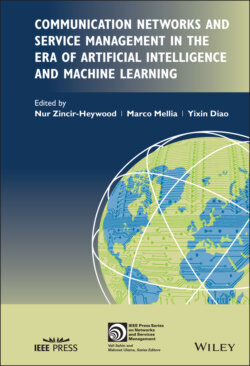Читать книгу Communication Networks and Service Management in the Era of Artificial Intelligence and Machine Learning - Группа авторов - Страница 35
2.2.1 Supervised Learning
ОглавлениеThe goal of supervised learning is to learn a mapping from the input space to the output space where the correct values are provided by labels, called the supervisor. Figure 2.1 shows an overview of the supervised learning model. If the output data are real‐valued, then such problems are also called regression. Otherwise, they are called classification, where the learning system fits a model that associates sets of (input) exemplars with labels, possibly with a corresponding measure of certainty. After training with past data, the model learns a classification rule, which may be in the form of an If‐Then‐Else form. Having a rule like this enables us to make predictions if the future is similar to the past. In some cases, we may want to calculate a probability, then the classification becomes learning an association between the input and output data. Learning a rule from data also allows knowledge extraction. In this case, the rule is a simple (complex) model that describes the data and therefore the learning model provides us with an insight about the process underlying the data. Moreover, a learning model also performs compression by fitting a rule to the data. This enables us to use less memory to store the data and less computation to process. Another use of supervised learning is outlier detection. In this case once the rule is learned, we focus on the parts of the data that are not covered by the rule. In other words, we identify the instances that do not follow the rule and/or are exceptions to the rule. These are outliers and imply anomalies requiring further analysis.
Figure 2.1 Supervised learning model.
